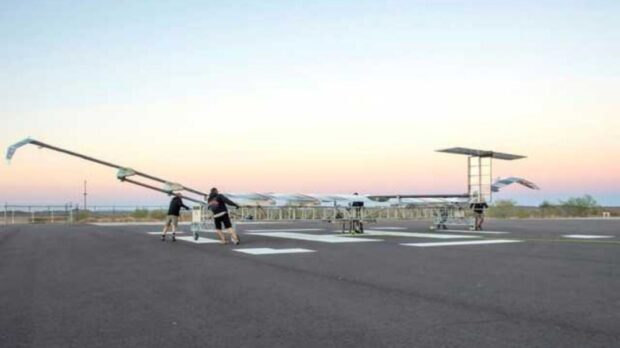aims to deploy its Zephyr aircraft that can stay aloft for days at a time from four or five bases around the world, starting with the operational hub in Laikipia County in Kenya early next year, Samer Halawi, the unit’s chief executive officer said in an interview in Nairobi.
However, this plan is subject to regulatory approvals from the Kenyan government.
This development could bring about a significant boost to the local economy by potentially creating up to 1,000 job opportunities for Kenyan residents.
AALTO’s CEO, Samer Halawi, recently engaged with various government agencies and telecommunications companies to discuss the potential of this groundbreaking technology. These high-altitude drones, operating in the stratosphere between 10 to 50 kilometers, have the capability to act as mobile signal masts and attract telecommunication companies as key users.
After thorough consideration, Airbus selected Kenya as the preferred hub for this groundbreaking initiative due to several favorable factors. The country offers the ideal combination of optimal weather conditions for launching and landing the aircraft, business-friendly practices, a substantial talent pool, and quick licensing processes.
Mr. Halawi, while emphasizing the significance of this milestone project, stated that Airbus plans to establish four to five hubs worldwide to serve the global market. Each hub will encompass various units, including launch and landing ports, maintenance facilities, assembly lines with a production capacity of up to 50 aircraft per year, an operations center, and customer support facilities.
A crucial aspect that makes Kenya stand out as a hub is its ability to launch and land these high-altitude drones for up to 10 months annually. Consequently, the country is slated to host the majority of launches and landings, further solidifying its position in the aerospace industry.
The establishment of the hub is expected to generate approximately 800 to 1,000 jobs in the information and communication technology (ICT), manufacturing, and service sectors over a span of seven years.
Furthermore, the Zephyr aircraft developed by Airbus over the past two decades brings a new dimension to the aerial landscape. With its unique ability to land and take off in a corkscrew motion and remain airborne for more than 30 days, the Zephyr HAPS has enormous potential. It weighs 75 kilograms, boasts a wingspan of 25 meters, and can serve multiple purposes such as security observation, border security, mobile connectivity, forest fire management, precision agriculture, and aerial photography for mapping.
As this groundbreaking initiative takes shape, Kenya stands to benefit from becoming a pioneering force in HAPS commercial and technical regulations, potentially paving the way for accelerated industrialization of the sector throughout the decade.
Airbus recognizes Kenya’s language capabilities and favorable time zone as advantages that would enable them to establish the program’s main customer care in the country.
With this next-generation technology and strategic collaboration, Kenya is on the brink of a new era in high-altitude communication drones, ushering in unparalleled opportunities for economic growth and technological advancement.
Source: TS2

